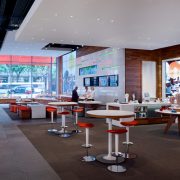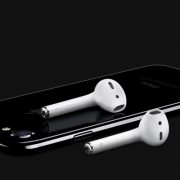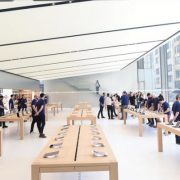The Apple Store’s secret of success
The Apple Store’s secret of success (and what retailers can learn from it)
Edited By LS Retail
It averages over 1 million visitors per day globally; people start queuing days before the opening of a new store, and when a new product is set for release. We are talking about the Apple Store, which currently holds the place of the most profitable store in the US – a long way ahead of second-in-line, renowned luxury jeweler Tiffany & Co.
From the uncluttered store design to the small product selection, many factors differentiate the Apple Store from its competitors. The real differentiator, though, and the one thing driving people back again and again, is the customer experience. By focusing completely on customers’ needs and desires, Apple re-imagined the way stores work – creating an innovative retail model which won over customers worldwide.
What are the innovative features of the Apple Store, and how can you make them yours?
1. Stop thinking about selling
At the Apple Store, the main focus of the sales assistants is the overall customer experience. Employees are not paid commission, and are therefore not concentrated on closing sales, or advising the most expensive items. The Apple Store’s final aim, as it was conceived by Steve Jobs, is to “enrich lives”. Sales assistants assist: they listen to what customers need, and give them useful advice – no matter whether that does not lead to an immediate sale.
What is your brand’s vision? If your whole business is only centered on selling, you may not be giving your customers great reasons to return.
2. Let people touch the products
Using the products in person is part of what makes the experience at the Apple Store special. From the way devices are positioned to the sales staff’s attitude, the whole store is conceived as a playroom, where people are expected to fees the product in their hands, give it a test drive.
Touch is a very powerful sense: science says that once we have touched something, we feel connected to it and are more likely to want to have that item.
Are you letting your customers test products? Or are you losing potential sales with a surpassed “don’t touch the merchandise” attitude?
3. Acknowledge your customers’ needs
At the Apple Store, the customer is at the center. Employees are trained to ask questions to learn the customer’s needs and habits before they suggest any product. This means that there is no “item of the month” to push: people are suggested the product that fits their specific needs.
Focus on the customer also means that the staff is instructed to focus on users, not products: people are shown the benefits the product would bring them, rather than a list of features.
How do you sell? Are you improving your customers’ lives with your products, or are you just making money?
4. Speed up the boring parts
No one likes to queue. To reduce boring waits at the register, the Apple Store staff is equipped with mobile POS, allowing them to close sales on the spot without having to send customers to queue at the register. In some stores customers can even check themselves out on their own mobile device through the Apple Store app.
Do you make it easy for your customers to buy from you? The quicker and more immediate the buying process, the more likely people are to return.
5. Hire the right people
To find, train and motivate employees is difficult – but it’s necessary to do it well. Apple’s hiring process is long and complex, but in the end the company is left with store staff that is passionate, shows positive attitude and is in love with the brand – the perfect people to make customers feel welcome and get excited about the products. Throughout their career, Apple Store employees are constantly trained to engage the brand’s customers, and taught about every detail of the products they sell.
What qualities do you look for in an employee? Passion about your products and brand and desire to make customers happy are the core attributes you should look for.
6. Create a clear set of rules
The Apple Store staff follows a series of “steps of customer service”, summarized by the acronym A.P.P.L.E. where “A” stands for “Approach customers with a personalized, warm welcome”, and so on to the end of the customer relationship. The “steps of service” method was pioneered by the Ritz-Carlton luxury hotel chain, where it was designed to create unforgettable customer experiences.
The idea is to have few, simple steps, which are easy to remember and can be adapted to most customer interactions, to ensure that all customers are treated with the attention they deserve.
How do you train your employees? Many businesses have now created their own simple set of rules to lead customer interactions with warmth and professionalism. Have you?
7. Don’t underestimate the “little” things
At the Apple Store, customers are welcomed with a smile when they enter the store, and greeted with an invitation to return when they exit – no matter whether they have made a purchase or are leaving empty-handed.
The beginning and end of a business relationship are the most important parts, because they are what people will remember. By making an effort to create a friendly first and last impression, you will enhance the perception of the overall shopping experience and build brand loyalty.
Do you make people feel welcome at your stores? Or are your smiles only for customers leaving with shopping bags full of merchandise?
As the competition from online stores increases, brick-and-mortar locations must use their special weapon – amazing customer service – to attract and retain customers. Any retailer can open a store, but few are able to create a lasting impression and a customer for life. To which category do you belong?
RECHI delivers global mobile phone retailers one-stop retail merchandising security & display solutions.









